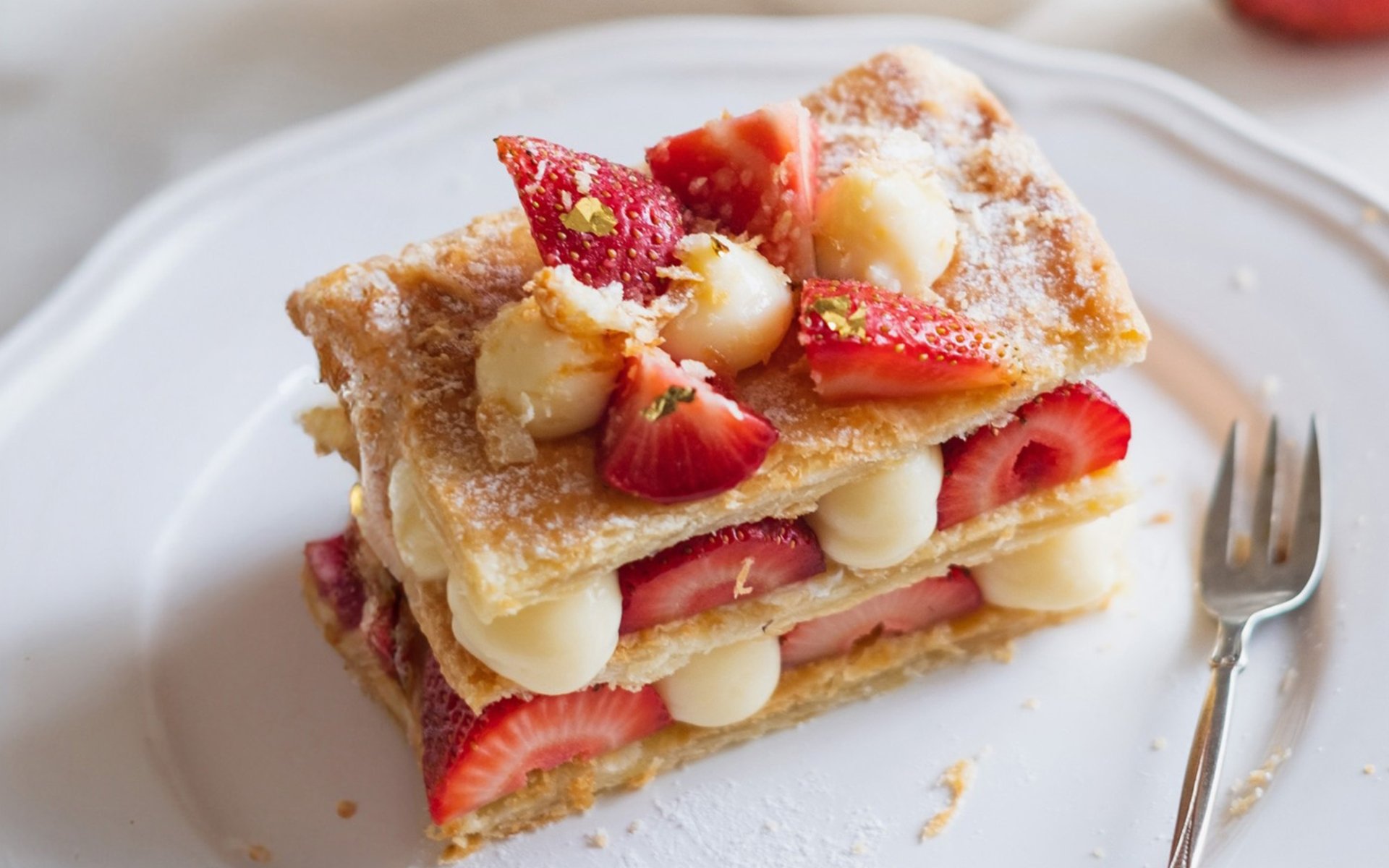Mille feuille

The Mille feuille is a classic French pastry, renowned as the dessert of victory. Its legend is intertwined with the military histories of several nations, including France and Russia.
Origin and Meaning of "Mille feuille"
While the precise origins of the Mille feuille are not definitively clear, the first known recipe appeared in Le Cuisinier françois, a cookbook by the famous French food historian François Pierre de la Varenne. This ancient text dates back to the 16th century (the era of King Louis XIV), indicating the pastry's long-standing presence in French culinary history.
Mille feuilles is a French term derived from Mille, meaning "one thousand," and Feuille, referring to a thin sheet of material or a leaf. Thus, Mille feuille literally translates to "a thousand leaves" or "a thousand thin sheets." This name aptly describes the pastry's structure: rectangular layers of thin, crispy puff pastry, alternating with a variety of cream fillings. This construction showcases the meticulousness involved in its creation.
Mille feuille in War Legends: Napoleon's Pastry and Russian Celebration
The legend of Mille feuille as the dessert of victory is recounted by Parisians, who believe that Emperor Napoleon ate Mille feuille before battles as a good omen, to boost his energy and morale. As his victories mounted, it became a routine for Napoleon to have Mille feuille for breakfast every day. This led traditional French people to affectionately call Mille feuille Napoleon Pastry.
Russia, on the other hand, tells a story that sarcastically commemorates France's defeat. During the Patriotic War of 1812, when Napoleon invaded Russia and suffered a crushing defeat, the Russians used Mille feuille to celebrate their victory. Deviating from its traditional rectangular shape, the Russians made Mille feuille resembling Napoleon's hat, dusted with powdered sugar to symbolize the strong Russian blizzards that decimated Napoleon's army. These stories highlight the Mille feuille's role as a cultural and political symbol in history.
Elevation to High Art by Marie-Antoine Carême
Later, in the 19th century, a new form of Mille feuille was developed by Marie-Antoine Carême, a renowned chef among the French aristocracy, often called the "king of chefs and chef of kings." He refined the Mille feuille to perfection, decorating it with leaf-like patterns and naming it poetically Gâteau de mille feuilles, or "cake of a thousand leaves," a reference to the delicate layers of puff pastry.
Carême's culinary genius transformed Mille feuille into a symbol of French haute cuisine. He employed highly meticulous techniques and used only three high-quality ingredients: puff pastry, vanilla-scented whipped cream, and powdered sugar, then decorated it exquisitely. This elevated the Mille feuille from a simple pastry to a delicate and luxurious work of art, setting new standards for French desserts.
The Endless Versatility of Modern Mille feuille
As culinary creativity knows no bounds, today's Mille feuille has evolved into countless variations. Over the years, chefs worldwide have experimented with diverse fillings, such as fresh fruits, custards, chocolates, or even savory options like smoked salmon and foie gras. This has opened new dimensions for this classic pastry.
These adaptations reflect the changing tastes of various cultures and the desire to integrate new flavors with the timeless classicism of the Mille feuille. With its exquisite taste combined with an elegant appearance, Mille feuille quickly garnered attention from royalty and high society, becoming a staple at celebrations across European courts in France, Russia, and England. It remains a beloved classic pastry enjoyed worldwide today, a testament to the enduring appeal of its beauty and perfect taste.


